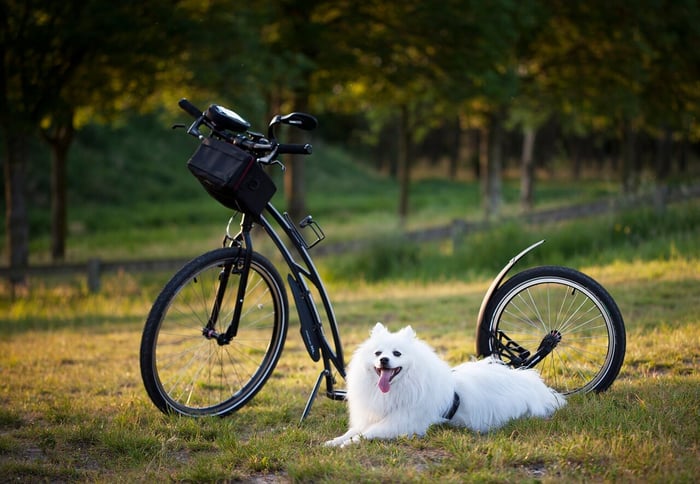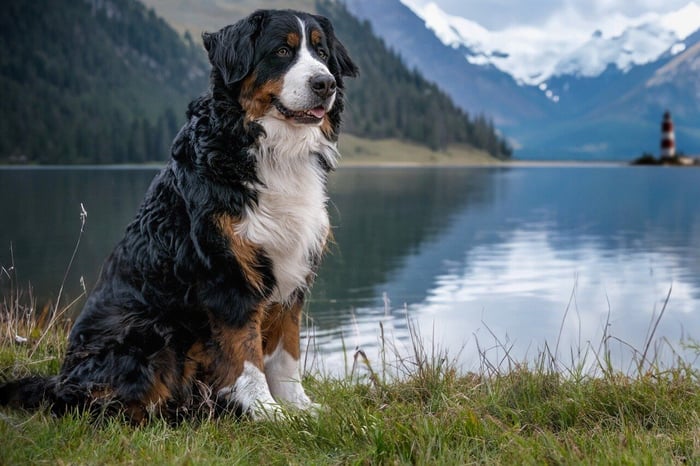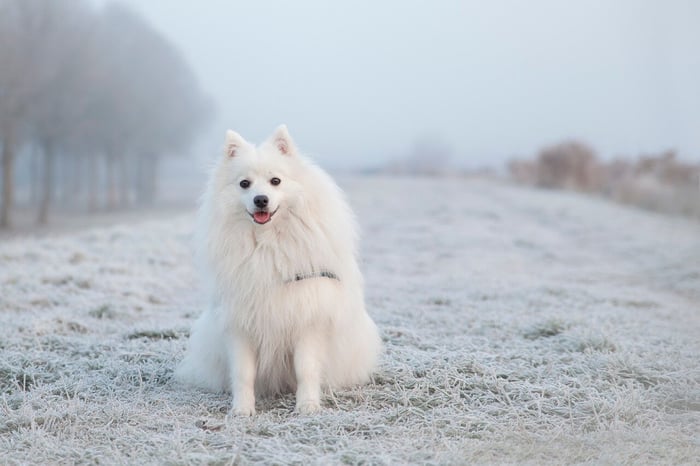Just as humans have common colds, so do our best friends, the dogs. Many pet owners ask whether the same cold viruses that infect us also affect our pets. The answer is yes, with a few differences. Dogs are not susceptible to the same strains of cold viruses that affect humans. So, how do dogs get cold? What is the difference between dog cold and flu symptoms? Here in this article, we will discuss everything in detail.
Dog Cold Symptoms vs. Dog Flu Symptoms
It’s easy to confuse a dog cold with the canine flu—after all, both cause similar cold-like symptoms in our four-legged friends. But understanding the difference is key to knowing how to treat your dog and when to seek veterinary care.
Let’s break down the most common signs and how to support your pup through it all.
Cold Symptoms in Dogs: Mild but Worth Watching
When dogs catch a cold, the symptoms are usually mild and tend to go away in one to two weeks. If your dog is dealing with a cold virus, you may notice:
A runny or congested nose
Watery eyes
Gentle coughing or sneezing
A slight drop in energy (they may prefer sleeping more than usual)
Mild loss of appetite
These symptoms can stem from dog-specific illnesses like kennel cough or canine parainfluenza virus, both of which affect the respiratory tract but aren’t typically life-threatening in healthy dogs.
Flu Symptoms in Dogs: A Bit More Serious
The canine flu is different from a mild cold. It spreads quickly—especially among other dogs in shared spaces—and can lead to more serious symptoms. Watch for:
A persistent, wet-sounding cough
Trouble breathing or difficulty breathing
High fever
Fatigue and refusing food
Flu-like symptoms that get worse over time
Unlike the common cold in dogs, canine influenza (dog flu) is more aggressive and can lead to serious complications like infectious canine hepatitis or canine distemper if left untreated. While these illnesses are rarely life-threatening in healthy dogs, they can still take a toll on your pup’s respiratory system.
Dogs often catch cold or flu viruses in high-traffic pet areas like shelters, dog parks, or doggy daycares. The virus spreads easily through the air, shared water or food bowls, or droplets from coughing and sneezing—just like in humans. Because dog flu is highly contagious, it can move quickly from one dog to another.
While humans can’t get dog flu, they can carry and spread the virus to pets without showing any symptoms themselves. So if you’ve been near a sick dog, be sure to wash your hands and change clothes before interacting with your own pet.
Since dogs can fall ill easily and pass viruses between each other, it’s a good idea to keep your dog at home and away from parks, pet stores, or other dogs if he has a respiratory infection. Giving your pup space to recover not only helps prevent further illness but also protects other dogs from getting sick too.
Tip: If your pup shows other concerning signs like shaking, vomiting, or refusing water, contact your animal clinic right away. Diagnostic tests may be needed to rule out anything more serious.
How To Treat And Protect Dogs From Colds?
If your dog has caught a cold, don’t worry—just like people, most mild dog colds pass in about one to two weeks with a little TLC. But knowing how to treat dog cold symptoms and keep your pup comfortable is essential for a smooth recovery (and preventing it from getting worse).
Here’s how you can help your four-legged friend feel better and stay safe.
1. Keep Them Cozy and Rested
When dogs get colds, they tend to have less energy and prefer staying warm. A comfortable, draft-free spot with soft blankets or a calming dog bed can do wonders.
Pro Tip: Use a humidifier near their bed to ease congestion and support their respiratory tract health.
Festive Classic Tartan Cozy Dog Anti-Anxiety Calming Bed

$58.99
Designed with affection for your four-legged family members, this bed merges the quaint allure of tradition with contemporary comforts. It's a lovingly crafted retreat where sophistication and serenity meet, thoughtfully created to give every beloved dog their own cozy corner… read more
2. Offer Warm, Nutritious Food
Dog warm food like vet-approved broths or soft, good quality nutrition can encourage eating, especially if your pup has a runny nose or reduced appetite.
Look for food with all the nutrients needed to support the immune system, or try gentle chicken soups made specifically for dogs.
3. Keep Their Environment Clean
A clean environment reduces exposure to the cold virus and other pathogens. Be sure to:
Wash your dog’s toys, blankets, and food and water bowls regularly
Limit contact with infected dogs
Provide fresh air but avoid extreme cold or damp conditions
4. Avoid Strenuous Activities
Dogs with colds should avoid excessive exercise. Replace long walks with short, quiet strolls or low-energy games indoors.
Let your pup rest—if they’re shaking a paw or seem winded, it’s a sign to ease off.
5. Never Use Human Cold Medicine
While it may be tempting to reach into your medicine cabinet, human cold remedies or cough suppressants can be dangerous for dogs. Always talk to your animal clinic before giving any medication.
If symptoms like trouble breathing, vomiting, or extreme lethargy appear, a vet may suggest diagnostic tests to rule out more serious illnesses like canine flu or infectious canine hepatitis.
6. Protecting Dogs From Future Colds
Prevention is just as important as treatment. Here’s how to protect your dog from catching another cold:
Keep up with pup’s vaccinations (especially for canine distemper and kennel cough)
Avoid crowded dog parks during flu season
Limit exposure to seasonal and environmental allergies
Feed a well-balanced diet to boost their immune system
Clean bedding and gear to reduce virus spread
Even though dogs can’t catch the same cold humans do, they can fall ill from dog-specific illnesses that create similar cold symptoms—so staying proactive matters.
Protect Your Dog From Cold: Simple Steps That Make a Big Difference
While dogs simply can’t catch the same cold virus that affects humans, they can still get sick from dog-specific illnesses like kennel cough, canine flu, and canine parainfluenza virus. These conditions can cause cold-like symptoms and even lead to more serious respiratory infections if left unchecked.
Here’s how to help your four-legged friend avoid falling prey to the cold this season.
1. Keep Up With Vaccinations
Preventing dog flu and infectious canine hepatitis starts with staying current on your pup’s vaccinations. Many respiratory tract infections are preventable with routine shots, especially if your dog frequently interacts with other dogs at parks, groomers, or daycares.
2. Maintain a Clean Environment
One of the easiest ways to stop the spread of cold viruses is to keep your dog’s things clean. Make sure to:
Wash food and water bowls daily
Regularly clean their toys, collars, and leashes
Wash blankets and bedding weekly, especially during flu season
This minimizes the germs that can linger in their living space and affect their immune system.
3. Feed Good Quality Nutrition
A strong immune system starts with proper nutrition. Feeding all the nutrients your dog needs helps them naturally fight off mild colds or seasonal and environmental allergies that might cause cold symptoms.
Include warm, digestible meals like dog-safe stews or broths during colder months to keep them cozy and nourished.
4. Limit Exposure During Peak Season
During colder weather or local dog flu outbreaks, be mindful of where you take your pup. Limit visits to crowded spaces and choose short, quiet walks over high-energy play in dog parks.
If you notice an infected dog at a park, it’s best to steer clear until your dog is fully protected and healthy.
5. Bundle Up & Keep Them Warm
Dogs can feel the chill, especially smaller breeds or older pups. Make sure they stay warm indoors and out by:
Dressing them in lightweight, comfortable dog apparel
Providing cozy dog beds in a warm, draft-free spot
Avoiding strenuous exercise in cold, damp weather
Warmth and rest are powerful cold remedies—plus, your dog will appreciate the extra snuggle time.
6. Watch for Early Signs
Knowing the common signs of a mild dog cold—like watery eyes, runny nose, sneezing, or a congested nose—can help you act early and prevent it from getting worse.
The earlier you recognize cold symptoms in dogs, the easier it is to treat them at home or contact your animal clinic if needed.
Conclusion
It's always important to take good care of your dog, but keeping them safe from the dog flu is especially important. You can help your dog avoid the flu by making sure they get their vaccinations, taking them for regular checkups, and following these tips for protecting them from the flu.
Read More:https://funnyfuzzy.com/a/blog/how-cold-is-too-cold-for-dogs











